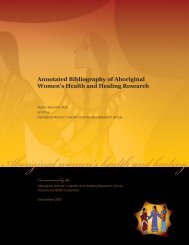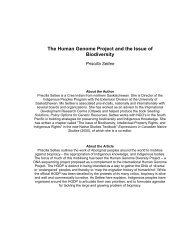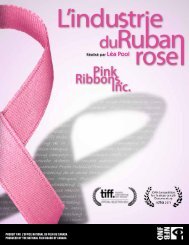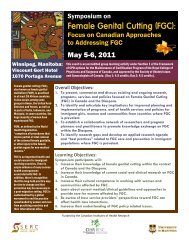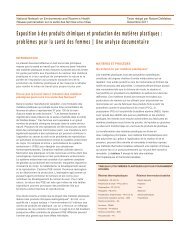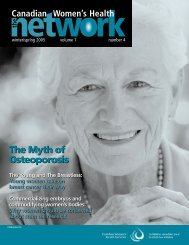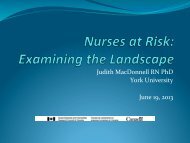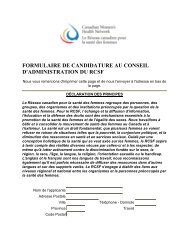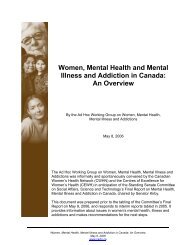here. - Canadian Women's Health Network
here. - Canadian Women's Health Network
here. - Canadian Women's Health Network
- No tags were found...
Create successful ePaper yourself
Turn your PDF publications into a flip-book with our unique Google optimized e-Paper software.
E. INCOME AND THE HEALTH OF WOMEN –WHAT WE KNOW FROM THE LITERATUREWomen, Income and<strong>Health</strong> in Manitoba231. Measuring Women’s Socioeconomic StatusThe ways in which women’s socioeconomicstatus and their health areconnected is determined in part by howone measures socio-economic status.The most common methods are:1. using the woman’s own occupation(individualistic approach). This isproblematic because it may underestimatewomen’s actual socioeconomicstatus, since many womenwith partners may work part-time ormay re-enter the labour force after anabsence to care for young children ata lower occupational grade than thatwhich they previously occupied. In aprospective study of all of the childrenborn in England, Scotland and Walesduring one week in 1958, Matthewset al concluded that they may haveunderestimated socioeconomicinequalities in women’s health byusing this approach. 332. using the “head of household’s”occupation (conventional approach).This is problematic because it mayunderestimate the effect of women’sown occupations on their health. It isalso complex because, since men andwomen tend to work in different jobs,it combines two different occupationalstructures. In this approach, a woman’smarital status is the sole criterion fordeciding which gender-segregatedoccupational class structure to use. 34However, research using this methodtends to show larger inequalities thanresearch using women’s ownoccupation. 353. using the highest occupation,income or education level in thehousehold (dominance model).Since most women earn less thanmost men, this method has the samelimitations as the conventional model.4. using measures of materialcircumstances. Some researchershave included housing tenure(in England, comparing those whoown their homes with those in privaterental housing and those in publichousing) and car ownership.5. using education as a measure ofsocioeconomic status. Because ofthe difficulties in using occupation as ameasure of women’s socioeconomicstatus, some researchers havesuggested using education. SaraArber, in the study noted above, foundthat education was strongly linked toself-assessed health for both Englishwomen and men and recommendedusing it as an alternative indicator ofsocial disadvantage for women, ratherthan own occupational class. 36Margaret Denton and VivienneWalters found that education was animportant predictor, for both men andwomen, of both self-perceived healthand functional health in a recentlypublished study using data from the<strong>Canadian</strong> National Population <strong>Health</strong>Survey. 376. using neighbourhood as a measureof socioeconomic status. This is themethod currently used in analyses ofManitoba <strong>Health</strong> Services InsurancePlan data by Patricia Kaufert of theUniversity of Manitoba and by theManitoba Centre for <strong>Health</strong> Policy andEvaluation. By linking Manitoba <strong>Health</strong>data with Census Canada data forcensus subdivisions, they havegrouped neighbourhoods into income




